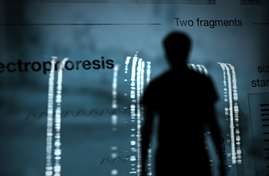Exhibition

We, the living, instinctively recoil in the presence of death. Whether the deceased is a beloved, a friend, or a stranger, the shock of death's finality registers. When a life is unexpectedly extinguished, we need answers and seek the cause.
Today, this need is addressed in police investigations, laboratories, courtrooms, and all of the venues in which scientific medicine interacts with the law—the field of forensics.
Visible Proofs is about the history of forensic medicine. Over the centuries, physicians, surgeons, and other professionals have struggled to develop scientific methods that translate views of bodies and body parts into "visible proofs" that can persuade judges, juries, and the public.
At times, the power of forensics has been exceeded by the difficulty of the questions it seeks to answer. But at best, its visible proofs testify on behalf of the victims of violent crime and against the guilty—and console and inspire and amaze us.
Definitions
- Forensic:
[adjective, from the Latin forensis, related to the noun forum; the space in ancient Rome where public discussion and disputation was held]: Pertaining to, connected with, or used in testimony or evidence in courts of law and governmental proceedings.
- Forensic medicine:
The field of medicine that interprets or establishes the facts pertaining to the unexplained or suspicious death of a human being or the suffering of grievous bodily harm, in civil or criminal law cases.
For a longer historical definition, see "Medical Jurisprudence, or Forensic Medicine," Encyclopedia Britannica, 1911 ed.